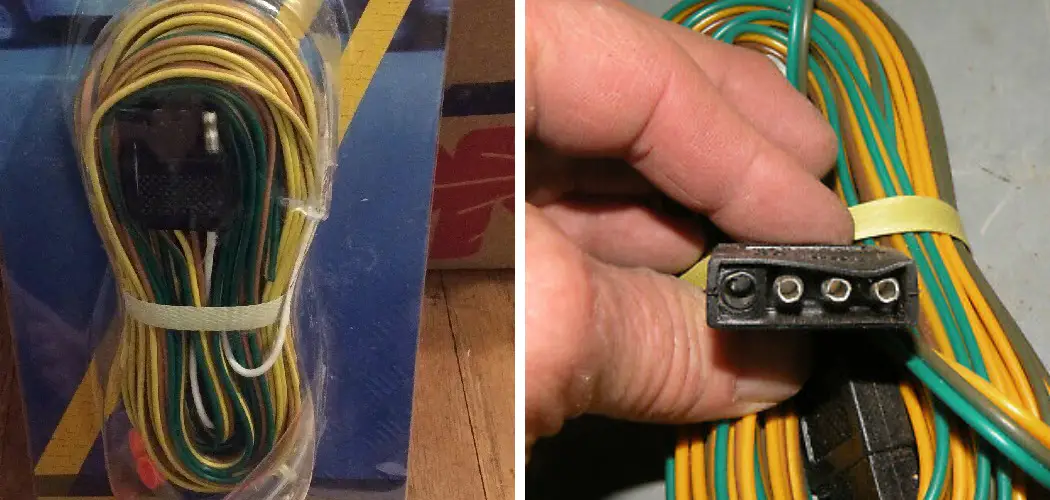When hitting the road with your trailer in tow, understanding how to connect trailer lights is crucial for ensuring safety, complying with legal requirements, and facilitating communication with other drivers.
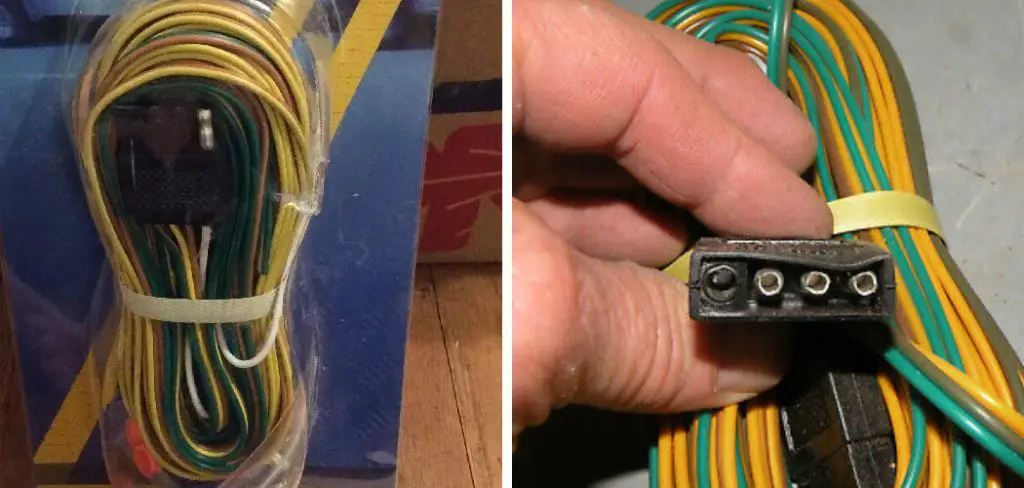
Properly connected trailer lights support visibility and signal intentions, such as turning or braking, which are fundamental to preventing accidents and promoting road safety. Moreover, most regions have stringent legal standards dictating the operation and visibility of trailer lights, making adherence to these laws a non-negotiable aspect of trailering.
This article aims to provide a comprehensive guide on connecting various types of trailer lights, offering clear instructions to make the process straightforward and reliable for trailers of all shapes and sizes. Whether you’re an experienced hauler or new to towing, this guide is designed to support safe and legal trailering through detailed, step-by-step lighting connection practices.
Understanding Trailer Types and Lighting Requirements
Trailers come in a variety of forms, each with specific lighting needs to ensure safety and compliance. Utility trailers, often used for landscaping or construction work, require basic lighting, including tail lights, brake lights, and turn signals, to accommodate their typical use during both day and night.
Boat trailers have similar requirements but also often include waterproof or submersible lights, considering the environments in which they operate. Cargo trailers, including enclosed types, need not only the standard tail and brake lights but also side markers and reflectors due to their larger size, which may obstruct the towing vehicle’s lights.
The size and weight of the trailer play a pivotal role in the number and type of lights required; larger or wider trailers need additional markers to outline their periphery and warn other road users effectively.
Furthermore, certain heavy-duty or specialized trailers carrying oversized or hazardous materials might have extra lighting requirements mandated by regional regulations, ensuring their distinct visibility on the road. With safety as the priority, these regulations are stringently applied, and compliance is regularly monitored to minimize risks associated with towing.
Choosing the Right Connector
Selecting the appropriate connector is critical in setting up your trailer lights. The most common types are the 4-pin flat and 7-pin round connectors. The 4-pin flat connector is ideal for smaller trailers with basic lighting needs—it covers ground, tail lights, brake lights, and turn signals.
It’s commonly used with utility and boat trailers and matches most recreational vehicle towing capacities. The 7-pin round connector provides these four functions and includes connections for reverse lights, a 12-volt power supply, and brakes.
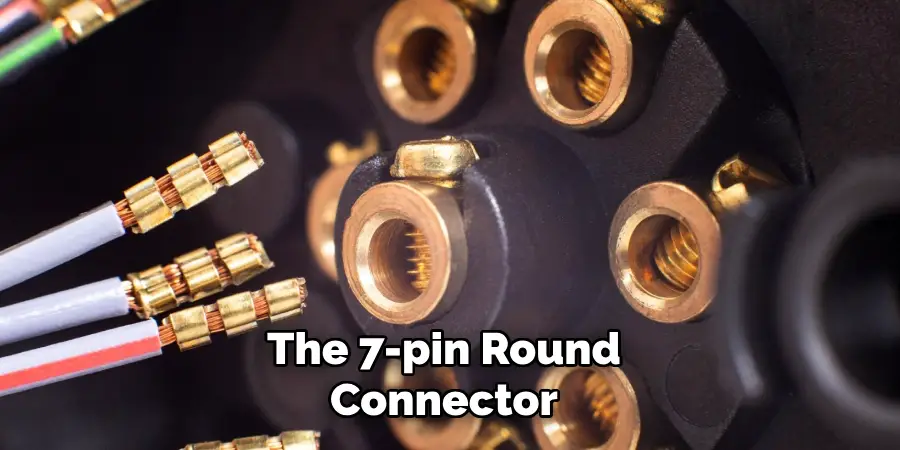
This makes it suitable for larger, heavier trailers like travel or car haulers. For those towing specialized equipment or commercial trailers, there are specialty connectors with additional pins that support extra functions such loads require. Choosing a connector that aligns with your trailer’s requirements and your vehicle’s towing capabilities is imperative.
Tools and Supplies for Connection
To properly connect trailer lights, you will need an assortment of tools and supplies:
- Wrenches — For tightening bolts and nuts.
- Screwdrivers — To assist in attaching the connector to the tow vehicle.
- Wire Strippers — For exposing fresh wire conducive to a better connection.
- Crimpers — Used to attach the wire to the connectors securely.
- Electrical Tape — For insulating wire connections after crimping.
- Connector Kits — Tailored to the specific connector type you’re using, these kits include the right housing and terminals.
Each of these tools ensures a secure and stable electrical connection between your vehicle and your trailer, which is critical for uninterrupted light functionality.
Preparing Your Trailer and Vehicle
Before embarking on the connection of your trailer lights, properly preparing your trailer and vehicle is essential to ensure a successful and safe outcome. Start with ensuring proper grounding, which is fundamental for electrical systems to function correctly and to prevent shorts.
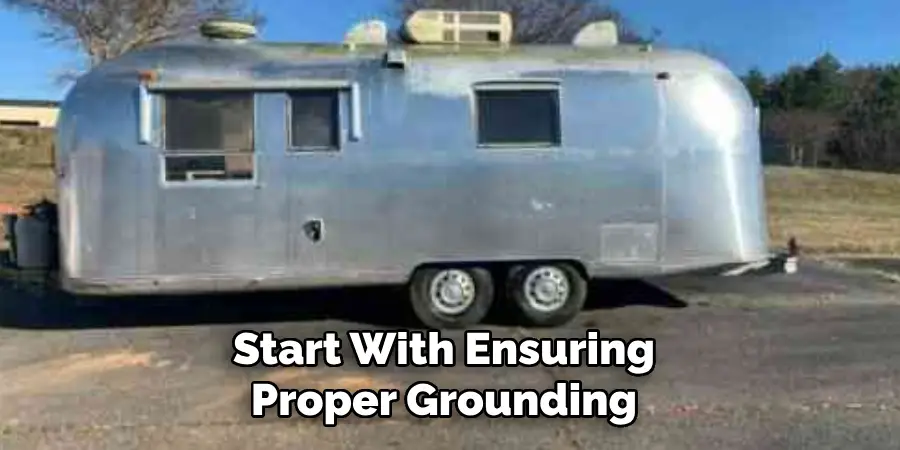
Next, locate the connection points on both the trailer and vehicle, typically found near the rear bumper on vehicles and at the front of the trailer. Then, double-check the light functionality on both the vehicle and trailer to confirm all lights are working before you begin the connection process.
It’s paramount to engage in safety precautions such as parking your setup on level ground to prevent it from moving while you work, engaging the parking brake, and disconnecting the batteries if necessary to avoid accidental electrical shocks or shorts during the installation process.
How to Connect Trailer Lights: A Comprehensive Guide
1. 4-pin Flat Connector
Connecting your trailer lights with a 4-pin flat connector is straightforward if you follow these steps:
- Match Pin Functions to Wires: Before starting, ensure that you understand the typical wiring color code: white for ground, brown for tail lights, yellow for the left turn signal and brake light, and green for the right turn signal and brake light.
- Expose and Trim Wires: Strip back a portion of the insulation on each wire using wire strippers to expose the fresh wire, making the connection to the connector pins.
- Securely Connect Wires: Use crimper tools to attach crimp connectors on each wire. Another method is to attach wires directly to screw terminals, if available. Make sure that each wire corresponds to the correct pin on the connector based on function.
- Ground the Connection: Ground the white wire to the trailer frame. This wire should be attached to a clean, unpainted metal surface to ensure good conductivity.
- Test Each Light Function: With the help of a second person, connect your trailer to the towing vehicle and test each light function. Have your helper activate the turn signals, brakes, and running lights while you ensure that they correspond correctly on the trailer.
2. 7-pin Round Connector
The 7-pin round connector, with added functions for larger trailers, requires careful attention:
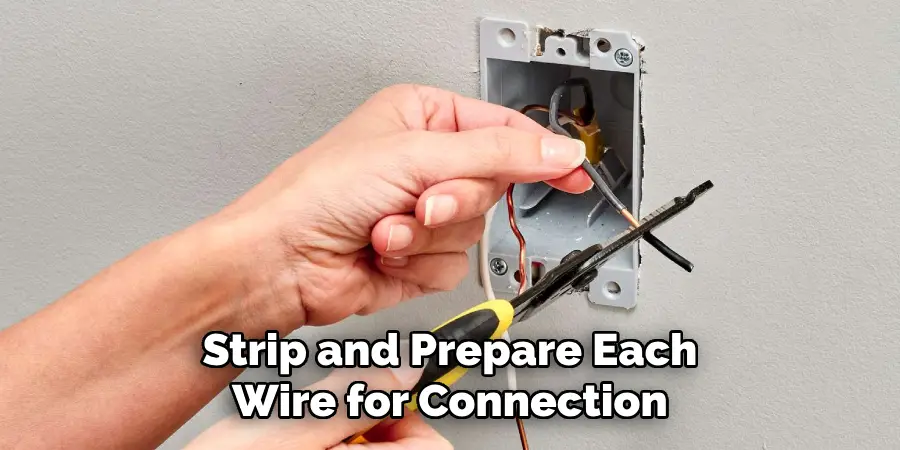
- Understand the Connector Functions: Seven pins provide a connection for left and right turn signals and brakes (yellow and green), tail/running lights (brown), ground (white), reverse lights (black), electric brakes (blue), and auxiliary power (red).
- Prepare the Wires: As with the 4-pin, strip and prepare each wire for connection. The color coding may vary, so consult the manufacturer’s diagram for accuracy.
- Accurate Wire Connection: Follow a color-coded wiring diagram carefully to align your trailer’s wiring with the connector. Attach each wire to its corresponding pin.
- Connect Extra Functions: For the reverse lights and auxiliary functions, ensure these wires are connected as per the diagram. For example, the reverse light wire (often black) needs to connect to the pin allocated for backup lights.
- Secure and Ground the Connector: Secure the connector to the trailer and apply the same grounding principles as the 4-pin. A proper ground is crucial for functionality.
- Test All Functions: Unlike the 4-pin, you must also test the reverse functionality and any auxiliary power features. Engage the vehicle in reverse to check the trailer’s backup lights and test auxiliary functions, like internal lights or electric brakes, to ensure all are working before hitting the road.
For both connector types, using a circuit tester is advisable to confirm each pin’s function before connecting the wires. Additionally, once connected, take the time to secure any loose wires with zip ties to prevent damage while traveling.
If any light or function is not operating after your first attempt, revisit the connections for any loose wires or poor connections and test again. You will establish a reliable lighting setup for all your trailering needs with patience and careful adherence to these steps.
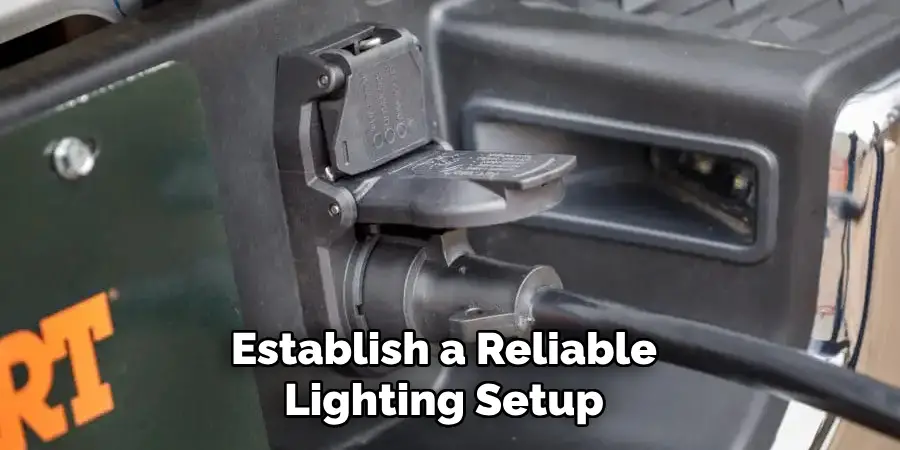
Remember, safety when working with electrical connections can’t be overemphasized. Always double-check your connections, and don’t hesitate to consult a professional if you’re unsure about any aspect of the installation process. Enjoy your trailering with the peace of mind that comes from well-connected and functioning trailer lights.
Advanced Wiring and Troubleshooting
When it comes to advanced wiring scenarios, customizing your trailer may involve integrating additional lighting and installing trailer brakes. Adding auxiliary lights, such as flood lights or interior lights, requires tapping into existing power lines while ensuring you do not overload the circuit, which might necessitate a relay. Trailer brakes require a dedicated wire for control and power — typically the blue wire in a 7-pin connector setup.
For troubleshooting, common issues usually revolve around non-functioning lights or signals. Start with the basics: check your bulb, as it is the component most likely to fail. If the bulbs are good, inspect for corrosion in the connector and ensure that all wires are properly secured and have not come loose from vibrations during travel.
For incorrect wiring, refer to the wiring guide specific to your vehicle and trailer model, and ensure that each wire is correctly matched to its corresponding pin. Check for blown fuses, which are often the culprits in electrical mishaps.
Remember that if you encounter repeated issues, if troubleshooting guides have not resolved your problem, or if you plan extensive electrical modifications, it is wise to seek professional help.
An expert in trailer wiring will ensure your system functions correctly and safely on open roads. Do not hesitate to consult a professional for persistent problems or complex wiring tasks for your safety and the safety of others on the road.
Final Touches and Safety Checks
Proper installation and regular maintenance are key to ensuring your trailer’s electrical systems operate smoothly and safely. It is critical to double-check every connection to avoid potential hazards while on the road. Secure all wires firmly in place with crimp connectors, and use protective measures such as zip ties or electrical conduit to prevent damage from exposure to the elements or movement during transit.
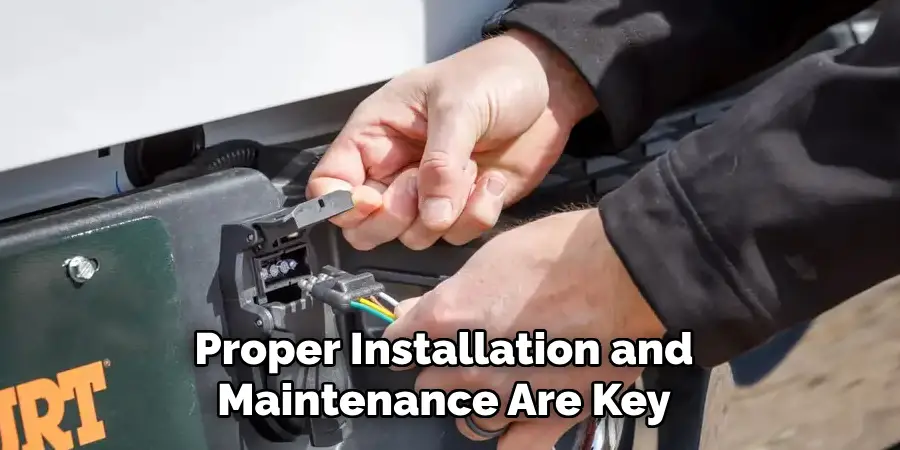
Remember, your trailer’s brakes, turn signals, and lights must be visible and fully functional to communicate with other drivers and to comply with road safety regulations.
Test these systems thoroughly before towing: Verify that the trailer brakes respond accurately to your vehicle’s brake controller, confirm that the turn signals mirror the towing vehicle’s signals, and ensure that all lights are bright and discernible, especially at night. These final safety checks help prevent accidents, fines, and stressful roadside repairs, safeguarding both you and your precious cargo.
That’s it! You’ve now learned how to connect trailer lights and troubleshoot common issues. Remember that every trailer is unique, so always refer to your specific model’s wiring diagram and seek professional help when needed. Proper installation and maintenance allow you to safely enjoy all the benefits of towing with functional and reliable trailer lights!
Legal Requirements and Maintenance Tips
Always be aware of and comply with the legal lighting requirements for trailers specific to your region, as they ensure your safety and the safety of others. It is essential to maintain your trailer’s electrical system regularly.
Clean connections to prevent corrosion, store wires, and connectors securely to avoid wear and tear, and conduct a thorough inspection for any damage before each trip. Regular maintenance helps meet legal standards and extends the lifespan of your trailer’s electrical system.
5 Benefits of Connecting Trailer Lights
Owning a trailer can enhance your mobility in various ways, from hauling equipment for work or fun to moving personal belongings during a relocation. However, the lighting system on your trailer is often overlooked but crucial to your travels.
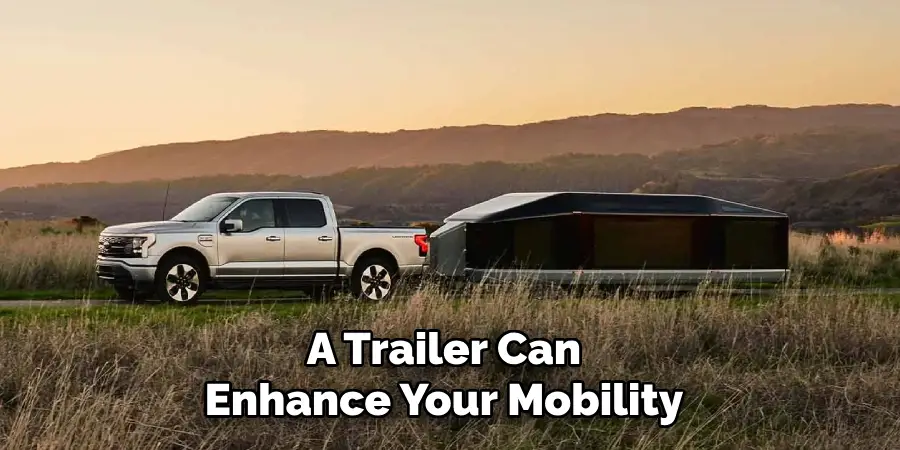
Properly connecting your trailer lights ensures your compliance with the law and can significantly enhance your safety, convenience, and even the overall look of your setup. Here are five compelling reasons why investing in a robust trailer lighting system is a step in the right direction.
1. Safety Enhancement
Being seen is just as important as seeing others when you’re out on the road. Trailer lights greatly improve the visibility of your vehicle, especially in low-light conditions or bad weather. This visibility is essential to reducing the risk of accidents, particularly from other drivers who may not see your trailer or its signals clearly.
Rear-end collisions can be a real hazard for any vehicle on the road—trailer lights help ensure that your presence is noticed, keeping you and your cargo safer.
Visibility on the Road
Modern LED trailer lights are exceptionally bright, making it hard to miss the presence of a trailer on the road. Even if you’re driving in the dark or in adverse weather conditions, good-quality trailer lights can give other drivers the heads-up they need to maintain a safe distance and share the road with you harmoniously.
Reduced Accident Risks
Statistics show that a significant portion of road accidents could have been prevented with better visibility. By using trailer lights, you make your presence known and communicate your intentions, such as braking, changing lanes, or turning, which can reduce sudden motions that might catch others off guard.
2. Legal Compliance
Adhering to the laws and regulations of the road is not just about safety—it’s also about the legality of your operation. Most jurisdictions mandate proper trailer lighting when the trailer is in operation. This means ensuring your trailer lights are connected and fully functional every time you hit the road.
Adhering to Road Regulations
Different states and countries have specific requirements for the lights that must be present on a trailer, including brake lights, turn signals, and markers. Having these appropriately wired onto your trailer means you’re abiding by the law and respecting the rules of the road, which is not only responsible but also prevents unnecessary hassle.
Avoiding Fines
The consequences of not having your trailer lights connected can range from a simple warning to hefty fines, depending on the offense’s jurisdiction and severity. By proactively ensuring your lights are working, you’re avoiding the risk of these penalties and protecting your pocketbook and driving record.
3. Convenience
Having a trailer equipped with lights that function as they should is incredibly convenient. From quickly identifying your trailer in a crowded parking lot to the smooth operation of hitching and towing, properly connected lights make the entire process hassle-free.
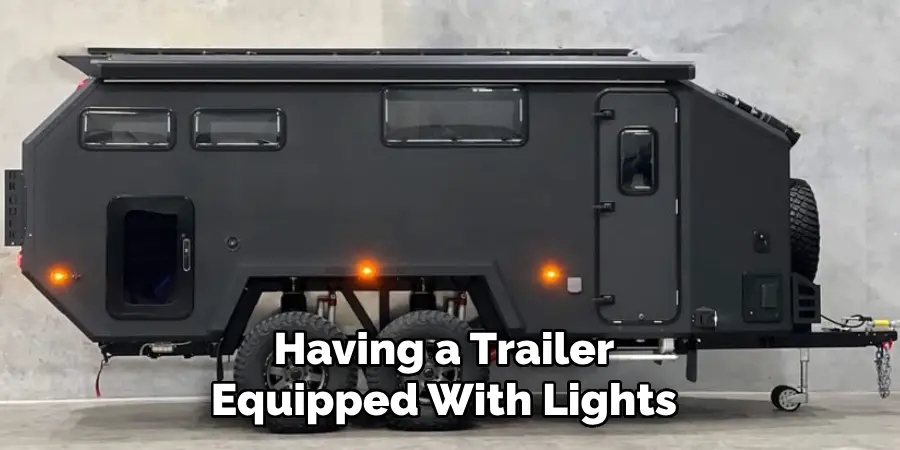
Easy Identification of Trailers
In a sea of similar-looking trailers, especially in commercial and construction settings, it’s often a good light setup that makes yours stand out and is easy to spot at a glance. This is beneficial when coordinating various moving components and ensuring the correct items are being picked up and transported.
Hassle-free Towing Experience
The last thing you want to deal with is the complication of lighting issues when you’re ready to hit the road. Properly connecting your trailer lights means you can focus on the drive rather than troubleshooting. It’s a simple way to reduce potential delays and frustrations associated with any part of your towing experience.
4. Protection for Your Vehicle
A well-lit trailer not only ensures that you’re seen by others but also protects your own vehicle from potential damage. When drivers can see you clearly, they can react appropriately, helping prevent accidents that could otherwise lead to damage.
Prevents Damage from Rear-end Collisions
The enhanced visibility of connected trailer lights can save you from the headaches and repair costs associated with a rear-end collision. Even a minor accident can result in significant damage, which largely goes unnoticed until it’s too late if you don’t have the proper lighting setup.
Avoids Accidents Due to Poor Visibility
Properly connected trailer lights protect you from others and prevent accidents caused by your own impaired visibility. When others can’t see your trailer clearly, they might misjudge your position on the road, leading to unnecessary scrapes and bumps.
5. Enhanced Aesthetics
Beyond the functional benefits, the lights on your trailer can be a stylish addition to your vehicle ensemble. A wide range of lighting options can add a touch of flair to your trailer, expressing your personal style.
Stylish Lighting Options Available
LED strips, neon underglow, and other decorative lighting can turn a plain trailer into a stylish statement. While these should be a secondary consideration to safety and utility, they are an exciting benefit of maintaining your trailer lights.
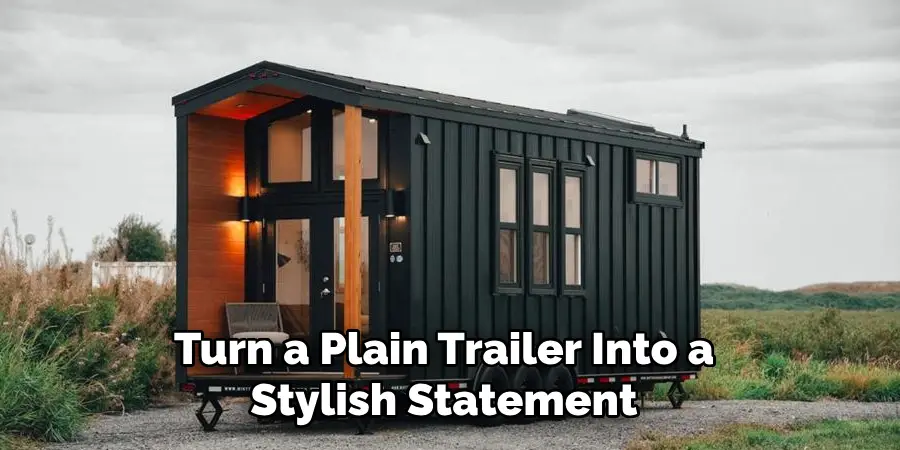
Adds a Visual Appeal to the Trailer
Using quality and tasteful lighting solutions can improve the look of your entire setup. Whether you’re using the trailer for work or play, having it look its best can be a source of pride and favorable attention from others on the road.
Conclusion
In conclusion, understanding how to connect trailer lights is essential for responsible towing. Not only does it secure compliance with legal standards, but it also ensures safety on the road for both the driver and fellow travelers. The detailed steps highlighted the importance of meticulous setup and regular maintenance, which play pivotal roles in safeguarding your trailer’s electrical functionality.
While the guidance offered is comprehensive, situations may arise where further assistance is necessary. Should doubts or difficulties present themselves, do not hesitate to reference additional resources or seek out the expertise of professionals.
Safety is paramount; professional advice can prove invaluable for those unfamiliar with the intricacies of trailer light wiring. Remember, an effectively connected lighting system will bring peace of mind, allowing you to focus on the journey ahead.

